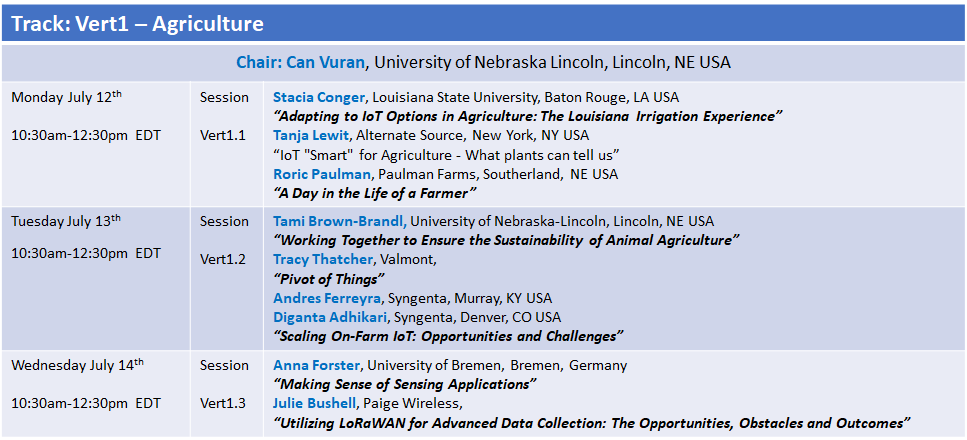Description
Agricultural technologies are used across the entire agri-food supply chain – from the planting of seeds to the harvesting of crops, breeding livestock and treating disease, transporting goods and managing commercial sales, where agricultural innovations have a role to play at every stage. Agricultural science and technology is rapidly becoming one of the world’s fastest growing and exciting markets. It is driven by global changes: a rising population, rapid development of emerging economies with western lifestyle aspirations and growing geopolitical instability around shortages of land, water and energy. A technology revolution is also taking place. Breakthroughs in nutrition, genetics, informatics, satellite imaging, remote sensing, meteorology, precision farming and low impact agriculture mean agricultural technologies have huge potential for development. Also, the scale of farming worldwide has changed significantly in recent years, with a move towards larger, intensive, profit-driven enterprises due to market pressures. This has resulted in demand for cost and labor reducing advanced farm automation technologies which can increase farm productivity. This step change has resulted in a demand for technologies and equipment which can reduce costs and labor inputs with concurrent increases in capacity to provide economies of scale. These economies of scale however will not yield profit unless quality is maintained and this is a central focus of any new technologies developed for the sector. The WF will explore how Internet of Things technologies contribute to address all of these challenges through improvements in yield and efficiency with discussions from renowned experts in academia, industry, and the public sector.
Track Chair
Mehmet Can Vuran, University of Nebraska – Lincoln, NE USA
Mehmet Can (Jon) Vuran received his B.Sc. degree in Electrical and Electronics Engineering from Bilkent University, Ankara, Turkey in 2002. He received his M.S. and Ph.D. degrees in Electrical and Computer Engineering from Georgia Institute of Technology in 2004 and 2007, respectively.
Currently, he is the Susan J. Rosowski Professor of Computer Science and Engineering at the University of Nebraska-Lincoln. Dr. Vuran received an NSF CAREER award in 2010 for “Bringing Wireless Sensor Networks Underground”. In 2014, 2015, and 2016, he was named a highly-cited researcher in computer science by Thomson Reuters. He received a Parents Recognition Award from UNL Parent’s Association in 2016. He is the co-author of Wireless Sensor Networks textbook, TPC Co-Chair of IEEE INFOCOM 2020, and an editor in Computer Networks Journal, IEEE Transactions on Mobile Computing, and IEEE Communications Surveys and Tutorials Journal. His current research interests include Internet of Things, underground communications, cognitive radio networks, and cyber-physical networks.
Speakers
Day 1: View from the Field
Stacia Davis Conger, LSU AgCenter LA, USA
 Dr. Stacia Davis Conger is an assistant professor of irrigation engineering at the LSU AgCenter located at the Red River Research Station in Bossier City, LA. She received her B.S. in 2005 from the University of Pittsburgh in Civil and Environmental Engineering. She also graduated from the University of Florida where she earned both her M.E. (2008) and Ph.D. (2014) degrees in Agricultural and Biological Engineering. Her research and extension activities while in Florida were directly related to evaluating the performance of smart irrigation technologies for landscape irrigation. Her current responsibilities include extension (80%) and research (20%) related to irrigation systems, irrigation scheduling, and associated technologies in agriculture, commercial, landscape, and nursery applications.
Dr. Stacia Davis Conger is an assistant professor of irrigation engineering at the LSU AgCenter located at the Red River Research Station in Bossier City, LA. She received her B.S. in 2005 from the University of Pittsburgh in Civil and Environmental Engineering. She also graduated from the University of Florida where she earned both her M.E. (2008) and Ph.D. (2014) degrees in Agricultural and Biological Engineering. Her research and extension activities while in Florida were directly related to evaluating the performance of smart irrigation technologies for landscape irrigation. Her current responsibilities include extension (80%) and research (20%) related to irrigation systems, irrigation scheduling, and associated technologies in agriculture, commercial, landscape, and nursery applications.
Title: Adapting to IoT Options in Agriculture: The Louisiana Irrigation Experience
Abstract: Despite Louisiana’s hot humid climate, critical growth periods for the majority of grain and fiber crops grown in Louisiana fall within the most unpredictable months (June-August) for rainfall volume and frequency. Producers have responded to this unpredictability through increased irrigation capacity with 54% of total acreage now under irrigation, but tight profit margins inherent in agriculture have led to minimal investment with 91% of the systems utilizing low efficiency methods. In past years, various technologies used to improve irrigation scheduling decisions and irrigation application efficiency (i.e. soil moisture sensors, surge valves, and computerized hole selection) were evaluated on typical production systems. These technologies produced significant water savings and were primarily advantageous in dry years with the possibility of delaying irrigation by a few days in hopes of dropping a full irrigation event from the crop season. However, barriers to adoption included the costs associated with upscaling from field scale to farm scale, lack of connectivity options in remote areas, and lack of general comfortability with technology. Despite low adoption, the producers’ experiences from the knowledge gained was crucial in improving attitude and perception of irrigation strategies.
Tanja Lewit, founding member of PC&S Inc.
 Tanja Lewit- a founding member of PC&S Inc established in 1992, a company that specializes in power measurements, monitoring and controls of AC and DC systems.
Tanja Lewit- a founding member of PC&S Inc established in 1992, a company that specializes in power measurements, monitoring and controls of AC and DC systems.
In 2010 Tanja has taken her passion for new technology – forming Alternate E Source; a company providing efficiency and monitoring solutions to the Data Center space: Infrastructure and DR solutions, virtual Cloud and physical server management, Data Center power management.
Introduced in Oct 2013 web based IoT smart systems and metering to cloud applications which include environmental monitoring, physical security and network surveillance for IT Server Rooms, remote equipment status and risk mitigation. A DCEP specialist with a focus on efficiency and security; Tanja has spoken at numerous leadership forums on utilizing smart technologies for various applications, and is an active member of several industry organizations, including AEE, AFCOM, AFE, IEEE, and local Tech Councils in NY/NJ.
Title: What can plants tell us?
Abstract: There is a science to their existence. It starts with the basics: Sun for photosynthesis, Soil for growing medium full of nutrients and ideal composition for root development. Water the essential for all life including ours, at the right times, the correct levels. The fact is an un unbalance or lack of any of these basics, and there is nothing to grow. Today’s IoT technology delivers the new version “garden tool kit” The Internet of Things (IoT) is the network of physical devices, web based with sensors, actuators, and connectivity which enables these things to connect – creating opportunities for more direct integration of the physical world, resulting in improvements, and in the case of plants can provide us new sustainability, new information from the soil, and at the very level of the plant itself. Its starts with monitoring for providing the right environment, and managing it for optimum temperature, humidity, air quality, and ensuring that they are maintained. Whether we are growing indoors which has become popularized due to an easier way to maintain controls, or whether we are growing outdoors in a field; we can measure and derive the analytics to know what the plant will grow, we can further “ tune in the volume “ and creating the ultimate grow.
Knowing continuously how the plant is reacting and being able to immediately alert when conditions are adverse is one way of crop optimization. For indoor applications, incorporating LED grow lights and their 3 varying bands of color provides a management of the “essence” of photosynthesis to increase yield and potency: so important for agriculture that services medicinal needs. Understanding this and how the role of lighting plays in fostering regenerating cell power, helps us to maintain potency and encourage the best the plant can offer us. In an indoor garden, having plants indoors with IoT monitoring and incorporating algorithms for grow lighting throughout the cycle makes it easier to manage variables. Outdoors we have a different challenge when considering the unknown or perhaps unexpected weather and sunlight conditions. So, monitoring changes – it becomes mobile, thermally sensitive and multifocal lens manufactured on a movable IoT and sensor device. The latest sentry to come along and deliver an ultimate focused view is the drone.
Roric Paulman, Paulman Farms, Southerland, NE USA
 Established and harvested first crop in 1985, Paulman Farms is a dba joint venture with Deb & Roric Paulman. Paulman Farms are located in Southwest Nebraska, Lincoln, Keith, Perkins counties; operating in three groundwater Natural Resource Districts – Twin Platte, Upper & Middle Republican – and in two major river basins; Platte and Republican
Established and harvested first crop in 1985, Paulman Farms is a dba joint venture with Deb & Roric Paulman. Paulman Farms are located in Southwest Nebraska, Lincoln, Keith, Perkins counties; operating in three groundwater Natural Resource Districts – Twin Platte, Upper & Middle Republican – and in two major river basins; Platte and Republican
Title: A Day in the Life of a Farmer
Day 2: Ag-IoT Use Cases
Tami Brown-Brandl, University of Nebraska-Lincoln
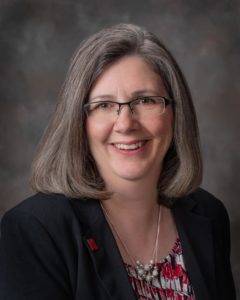
Dr. Tami Brown-Brandl is a professor and Dr. William E. and Eleanor L. Splinter Chair at the University of Nebraska-Lincoln. She received her BS in Biological Systems Engineering at University of Nebraska Lincoln, a dual MS degree in Animal Science and Biological Systems Engineering also from UNL, and a Ph.D. in Agricultural engineering from University of Kentucky. Her research program has been focused on engineering approaches to improve animal well-being and production efficiency. This is accomplished employing by several uniquely focus areas including: Understanding and prediction animal heat stress, Calorimetry and animal energetics, and Precision Animal Management. Dr Brown-Brandl has 100 peer-reviewed papers, 99 conference proceedings papers, 50 abstracts, two peer-reviewed book chapters, and four invited publications. She has been invited to present over 30 invited presentations in 6 different countries.
Title: Working Together to Ensure the Sustainability of Animal Ag
Abstract: Animal production today has many pressures including environmental concerns, animal well-being, hiring employees, worker safety and satisfaction, careful use of antibiotics, food safety, foreign animal disease, among others. New technologies are needed for the animal ag in US to remain sustainable and the US publics to continue to enjoy the luxury of a largely domestic food supply. In-depth evaluations of current animal facilities have and continue to identify new areas to apply technology. Research has shown promising results for implementing technology. The objective of this presentation is to provide an understanding of current and future technologies to engage diverse group of professionals to further the development creative solutions for sustainable animal production systems. Some of the specific areas that will be addressed include group housing systems for sows and grow-finishing swine systems. The development of precision animal management systems includes sensor selection, data capture, and types of data processing. Current technologies that are being used in precision animal management systems include sound, images, and radio frequency identification (RFID) systems. The data processing methods are needed to ensure the data is transformed into useful information, as livestock producers do not have time to sift through gigabytes of data. Among application examples will be the evaluation of individual animal data for pig weight, illness detection, and detection of lameness, and the errors associated with different components.
Tracy Thatcher, Electrical Design Engineering Manager for Valley Irrigation
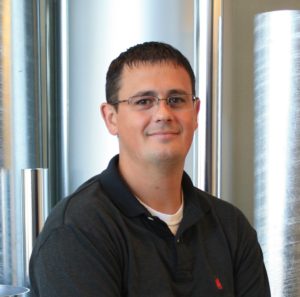 Tracy Thatcher is the Electrical Design Engineering Manager for Valley Irrigation. Tracy grew up in a rural farming community outside of Peoria Illinois. He earned his BSEE from Bradley University in 2002. Tracy has 15+ years of experience with industrial and custom embedded machine controls. He specializes in graphical user interfaces, motor controls, sensors, and machine automation. In his current role, Tracy leads a high-performing cross-functional team of engineers and designers in developing innovative IoT products and solutions.
Tracy Thatcher is the Electrical Design Engineering Manager for Valley Irrigation. Tracy grew up in a rural farming community outside of Peoria Illinois. He earned his BSEE from Bradley University in 2002. Tracy has 15+ years of experience with industrial and custom embedded machine controls. He specializes in graphical user interfaces, motor controls, sensors, and machine automation. In his current role, Tracy leads a high-performing cross-functional team of engineers and designers in developing innovative IoT products and solutions.
Title: “Pivot of Things”
Abstract: The presentation will present why there is so much focus and interest in AgTech and what products and services are being developed now, and some in the future, that help solve some of the world’s toughest problems around the global shortage of fresh water and food security in developing nations.
Andres Ferreyra, PhD, Data Asset Manager, Syngenta
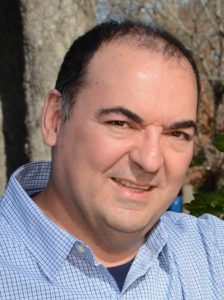 As Data Asset Manager in Syngenta Digital, Dr. Andres Ferreyra focuses on leading the implementation of infrastructure to collect, standardize, store, process and deliver field operations and IoT data to help Syngenta’s customers maximize the profitability, sustainability and freedom to operate of their farming operations. He also leads development of architecture for Syngenta’s next-generation grower-facing data platform. Dr Ferreyra is an advocate of making agricultural field operations data Findable, Accessible, Interoperable and Reusable (FAIR), and of supporting the FAIRification process with a robust semantic infrastructure. He is also a committed contributor and leader in the agriculture industry’s data standards implementation efforts, in organizations such as AgGateway, AEF, ASABE and ISO.
As Data Asset Manager in Syngenta Digital, Dr. Andres Ferreyra focuses on leading the implementation of infrastructure to collect, standardize, store, process and deliver field operations and IoT data to help Syngenta’s customers maximize the profitability, sustainability and freedom to operate of their farming operations. He also leads development of architecture for Syngenta’s next-generation grower-facing data platform. Dr Ferreyra is an advocate of making agricultural field operations data Findable, Accessible, Interoperable and Reusable (FAIR), and of supporting the FAIRification process with a robust semantic infrastructure. He is also a committed contributor and leader in the agriculture industry’s data standards implementation efforts, in organizations such as AgGateway, AEF, ASABE and ISO.
Title: Scaling On-Farm IoT: Opportunities and Challenges
Abstract: Digital agriculture in general, and the Internet of Things (IoT) in particular, have great promise to enable service providers to help growers maximize the profitability, sustainability, and freedom to operate of their agricultural operations.
Sometimes these services are provided by retailers who include them as part of their package of services to their customers, by crop input manufacturers who seek to strengthen their relationship with growers by providing them with valuable tools, or by consultants or service providers. However, for IoT to realize its potential in agriculture, the process of setting up, managing, and maintaining a data collection system in the field must be scalable. This is not currently the state of the industry.
There are multiple facets of scalability: value, total cost of ownership, ease of installation, ease of configuration, ease of removal/reinstallation, and ease of maintenance. Another key factor is interoperability with data-consuming systems (e.g., decision-support and farm management tools), and the system observability that can enable operators to quickly identify and diagnose missing or faulty data.
This presentation elaborates upon the different challenges to scalability of on-farm IoT, proposes solutions thereto, and identifies some pain points for which the agriculture industry does not yet have definitive answers.
Diganta Adhikari, PhD, Head of On-Farm IoT, Syngenta
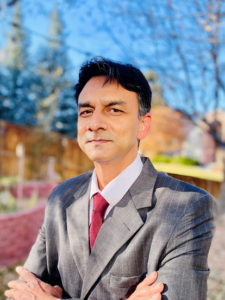 Diganta Adhikari is a Ph.D. educated engineering management professional with extensive experience providing the leadership and direction needed to drive the achievement of key organizational engineering-related business goals and objectives. As Head of On-farm IoT at Syngenta Digital Product Engineering, Diganta focuses on evangelizing and defining Internet of Things (IoT) strategy for digital agriculture. Diganta’ s previous work at Irrometer Co Inc. (six years) and Center for Irrigation Technology at Fresno State (ten years) spanned a wide range of research areas including irrigation water management, environmental engineering, renewable energy, air quality, sensor evaluation and development, and IoT-based embedded systems. He is continually recognized for the ability to deliver impactful results while leading in fast-paced, dynamic business environments.
Diganta Adhikari is a Ph.D. educated engineering management professional with extensive experience providing the leadership and direction needed to drive the achievement of key organizational engineering-related business goals and objectives. As Head of On-farm IoT at Syngenta Digital Product Engineering, Diganta focuses on evangelizing and defining Internet of Things (IoT) strategy for digital agriculture. Diganta’ s previous work at Irrometer Co Inc. (six years) and Center for Irrigation Technology at Fresno State (ten years) spanned a wide range of research areas including irrigation water management, environmental engineering, renewable energy, air quality, sensor evaluation and development, and IoT-based embedded systems. He is continually recognized for the ability to deliver impactful results while leading in fast-paced, dynamic business environments.
Day 3: Connectivity for Ag-IoT
Anna Förster, University of Bremen, Germany
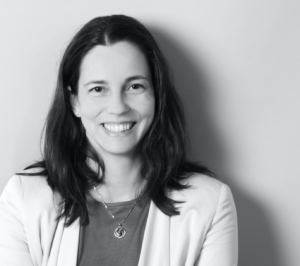 Anna Förster obtained her MSc degree in computer science and aerospace engineering from the Free University of Berlin, Germany, in 2004 and her PhD degree in self-organising sensor networks from the University of Lugano, Switzerland, in 2009. She also worked as a junior business consultant for McKinsey&Company, Berlin, between 2004 and 2005. From 2010 to 2014, she was a researcher and lecturer at SUPSI (the University of Applied Sciences of Southern Switzerland). Since 2015, she leads the Sustainable Communication Networks group at the University of Bremen.
Anna Förster obtained her MSc degree in computer science and aerospace engineering from the Free University of Berlin, Germany, in 2004 and her PhD degree in self-organising sensor networks from the University of Lugano, Switzerland, in 2009. She also worked as a junior business consultant for McKinsey&Company, Berlin, between 2004 and 2005. From 2010 to 2014, she was a researcher and lecturer at SUPSI (the University of Applied Sciences of Southern Switzerland). Since 2015, she leads the Sustainable Communication Networks group at the University of Bremen.
Her main research interests lie in self-organising and autonomous sensor and opportunistic networks. She applies various artificial intelligence techniques, like machine learning and swarm intelligence, to various aspects of wireless communication protocols and applications. Furthermore, she is active in designing and developing simulation models and benchmarks for wireless networks. Her research group is especially focused on how to achieve better sustainability of communication networks on one side and how to boost everyday sustainability by innovative applications.
Title: Making Sense of Sensing Applications
Abstract: This talk will first introduce MoleNet, which is a self-developed and maintained hardware platform for underground and other challenged environments. Some sample applications will be discussed and sample data from soil monitoring will be presented. The focus of the talk is however on what to do from this data: how to make the next step from sensing to making sense of the data. What are the users’ expectations? What are the challenges? What is needed to make such applications truly useful and help us reach the Sustainable Development Goals.
Julie Bushell, President, Paige Wireless, Director, Paige Precision Agriculture, Partner, Paige Electric Co. L.P
 Julie Bushell is the President of Paige Wireless and Director of Paige Precision Agriculture. She is an experienced, results-driven leader and visionary designing and implementing connectivity solutions to solve rural America’s large connectivity gap. Passionate about empowering and shaping the sustainable industries of the future through technological advanced in IoT, Broadband, Biosecurity, Food Safety and Precision Agriculture.
Julie Bushell is the President of Paige Wireless and Director of Paige Precision Agriculture. She is an experienced, results-driven leader and visionary designing and implementing connectivity solutions to solve rural America’s large connectivity gap. Passionate about empowering and shaping the sustainable industries of the future through technological advanced in IoT, Broadband, Biosecurity, Food Safety and Precision Agriculture.
Bushell’s career has been laser-focused on rural economic development since joining Paige in 2004 and becoming partner in 2013. Her passion for our country’s producers and their ability to compete on a global scale drives her business, from products and services to emerging technology and advocacy. In March 2019, Bushell spear-headed the creation of Paige Wireless, a new innovative arm of Paige Electric. Paige Wireless was born from Bushell’s dedication to continuous improvement, and her passion to connect the under-served. She believes measurable societal advancements are born in rural America. Beyond her work at Paige Electric, Bushell is involved in the Irrigation Association where she serves on the Board of Directors. She has also served as Chair of the Government Affairs Committee from 2017-2019 and Vice-Chair from 2015-2017. Her work has spanned multiple technology innovation initiatives and successfully advocating for the connectivity to support them in the 2018 Farm Bill. Julie also serves as vice chair for the “Encouraging Adoption of Precision Agriculture” working group for the FCC’s Precision Ag Connectivity Task Force.
Title: Utilizing LoRaWAN for Advanced Data Collection: The Opportunities, Obstacles and Outcomes



